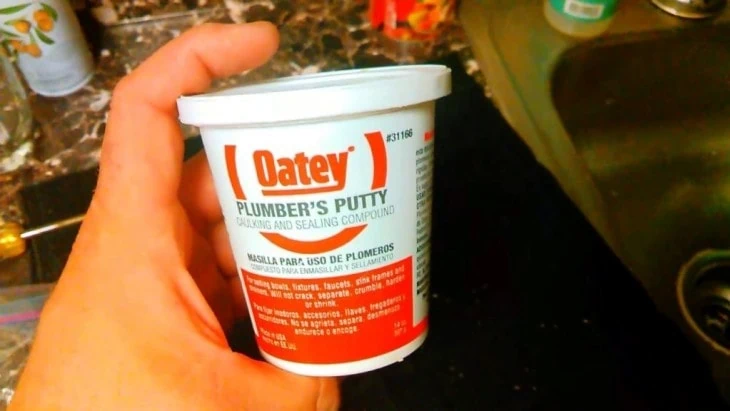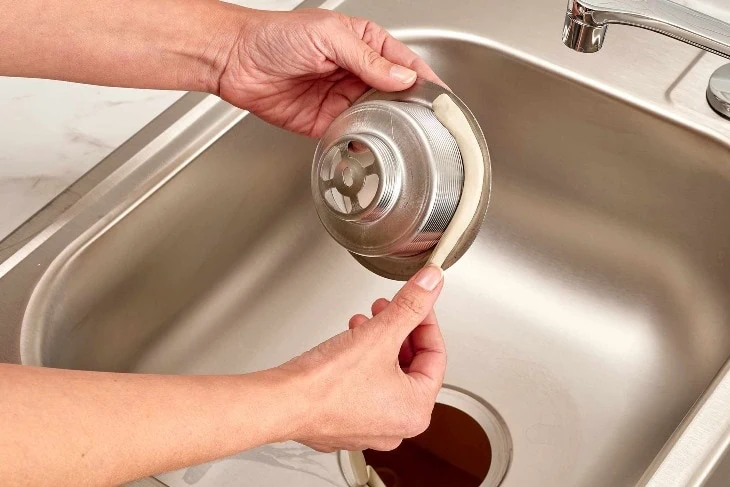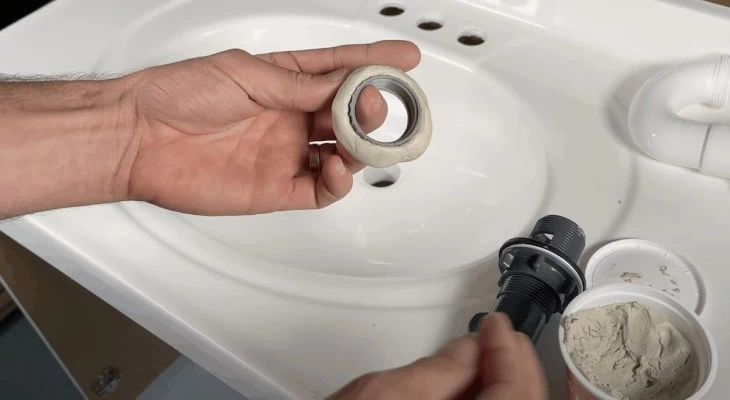Whether you’re installing a new faucet or shower drain or simply repairing an existing one, you may have realized you need to use plumber’s putty. This useful product is a common staple when doing these types of DIY projects.
As will most products used for home improvement, you need to familiarize yourself with plumber’s putty dry time.
You don’t want your plumber’s putty to actually dry. The nature of this product is that it stays pliable and easy to work with, install, remove, and replace. You may want to give it a few hours to come to room temperature after installation, but it’s actually okay to use your drain immediately.
Table of Contents
What is Plumber’s Putty?

Simply put, among other things, plumber’s putty is a sealant used on fixtures to create a watertight seal. It has the consistency of clay and is applied easily, drying to a “putty” like feel. It’s most commonly used on faucets and shower drains.
It’s fairly cheap and widely available at almost all hardware and home improvement stores, as well as online on sites like Amazon.
How Do I Use Plumber’s Putty?
First, identify the flange you are wishing to make a seal around. The flange is the flared mouthpiece at the opening of your drain. Remove it from the drain pipe and clean it thoroughly. Make sure to also clean the exposed part of your sink or shower that you will affix it to.
It’s recommended that your plumber’s putty is at room temperature, if it’s too cold it will be difficult to work with and if it’s too warm, it will be too thin.
Take an appropriate amount of plumber’s putty from the container and start working it between your hands. You will want to roll it out just like you are making a PlayDoh snake. It should be easy to work with and leave minimal residue on your hands.
Wrap your putty snake around the flange and remove the excess. Place it into your drain and press down with moderate pressure. Then, affix the drain pipe below your fixture and tighten. You will see your flange start to get tighter and tighter on the top.
As you tighten your pipe, you’ll notice the excess plumber’s putty start to seep out from your flange. Don’t worry, there’s still plenty of putty left to make your seal! At this point, you don’t want to rotate your flange or your pipe anymore.
Simply peel off the extra putty and you are all done.
How Long Does Plumber’s Putty Take to Set?
This is a tricky question to answer because the nature of plumber’s putty makes it so that it never really “cures”. It is meant to remain pliable in order to create its famous watertight seal.
Also, its pliability allows it to be easily removed and replaced should the need for future repairs arise.
That being said, each professional will have their personal recommendations for how long you need to wait after installing your drain before you can use it. It also can be dependent on what type of plumber’s putty you use.
Immediately After Installation

If the conditions are right and you’ve used a true plumber’s putty, you should be able to use your drain immediately after installing it.
3-5 Hours After Installation
If you want to be on the safe side, some professionals recommend you wait a few hours after installing plumbers putty before you use your drain. The main reasoning for this is to allow it to fully come to room temperature so it works as intended.
This is especially important if you’ve installed it in a colder environment.
10-15 Years After Installation
Years?! Yes, years. 10 to 15 years is the usual lifespan of an applied plumber’s putty. After this long, the plumber’s putty will truly dry.
But that’s not what you want! Plumber’s putty that is fully dry will crack and peel away from its surface, making it no longer useful and at this point, it will need to be replaced.
So, how long does plumber’s putty take to dry? You don’t want it to. Because if it dries, you need a new application.
Are There Different Kinds of Plumber’s Putty?
While different brands make plumbers putty, the formulation and recommended use is the same. There are a few variations, like plumbers putty that is oil-free to prevent staining, but the same rules apply and it will not affect how long the plumber’s putty takes to cure.
However, there are alternatives to plumber’s putty that will have different set times but again, these alternatives are not considered true plumbers putty.
Epoxy Putty
Another kind of putty used for plumbing purposes is epoxy putty. Its recommended use is different from plumber’s putty and it’s not advised to use them in place of each other. Epoxy putty is a two-part compound that creates a permanent seal.
It goes on much the same way as a plumber’s putty but can take up to 72 hours to fully cure. Avoid using this on your drain flange though, because the seal will be permanent and could damage your fixture if it needs to be removed.
Silicone Caulk
![]()
Sometimes, people opt to use silicone caulk instead of plumber’s putty because it can create a tighter seal. The main differences are that silicone caulk can be more difficult to remove and can require up to 24-48 hours before it’s completely dry.
One thing to note is that silicone caulk has been known to have a harsh smell, whereas plumber’s putty is typically odorless.
Final Thoughts
If you’re concerned about plumber’s putty cure time, don’t be. This product is intended to stay pliable and not dry out in order to effectively seal fixtures and prevent water from seeping through.
Make sure you use a true plumber’s putty like this, apply enough of it, and tighten the rest of the drain fixtures sufficiently. If you apply your plumber’s putty correctly and at room temperature, you should be able to use your drain immediately afterwards.

